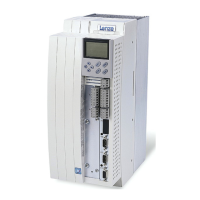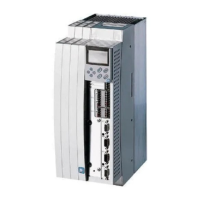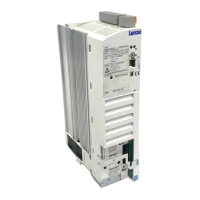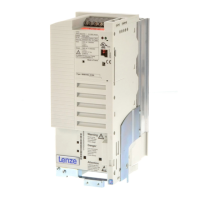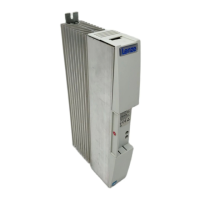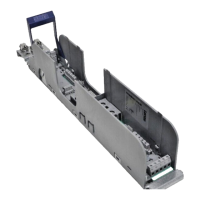Safety instructions
Residual hazards
2
2.3
2.3-1
EDSVF9333V EN 3.0-06/2005
2.3 Residual hazards
ƒ Before working on the controller, check that no voltage is applied to
the power terminals:
– Because the power terminals V, W, +U
G
and -U
G
remain live for at
least 3 minutes after disconnection from the mains.
– Because the power terminals L1, L2, L3; U, V, W, +U
G
and -U
G
remain
live with the motor stopped.
ƒ The discharge current to earth (PE) is >3.5 mA. EN 50178 requires a
fixed installation.
ƒ The heatsink of the controller has an operating temperature of > 80 °C:
– Contact with the heatsink results in burns.
ƒ If you use the ”flying-restart circuit” function (C0142 = 2, 3) for
machines with a low moment of inertia and minimum friction:
– After controller enable at s tandstill the motor may start or change
the direction of rotation for short periods as the flying restart process
is also executed when the speed is zero.
ƒ During parameter set transfer the control terminals of the controller
can have undefined states!
– Therefore the plugs X5 and X6 must be removed before the transfer
is executed. This ensures that the controller is inhibited and all
control terminals have the specified ”LOW” state.
ƒ Cyclic connection and disconnection of the supply voltage can overload
and destroy the input current limitation of the controller:
– In case of cyclic switching over a longer period of time at least 3
minutes have to pass between switch-off and switch-on!
ƒ Some settings of the controllers can lead to motor overheating:
– For instance, longer DC-braking operations.
– Longer operation of self-ventilated motors at low speed.
ƒ Drive systems can reach dangerous overspeeds (e.g. setting high field
frequencies for motors and machines which are not suitable):
– The controllers are protected against those operating conditions. For
this purpose use additional components.
Protection of persons
Device protection
Motor protection
Protection of the
machine/system
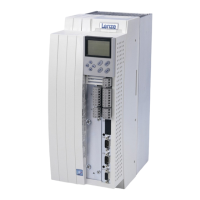
